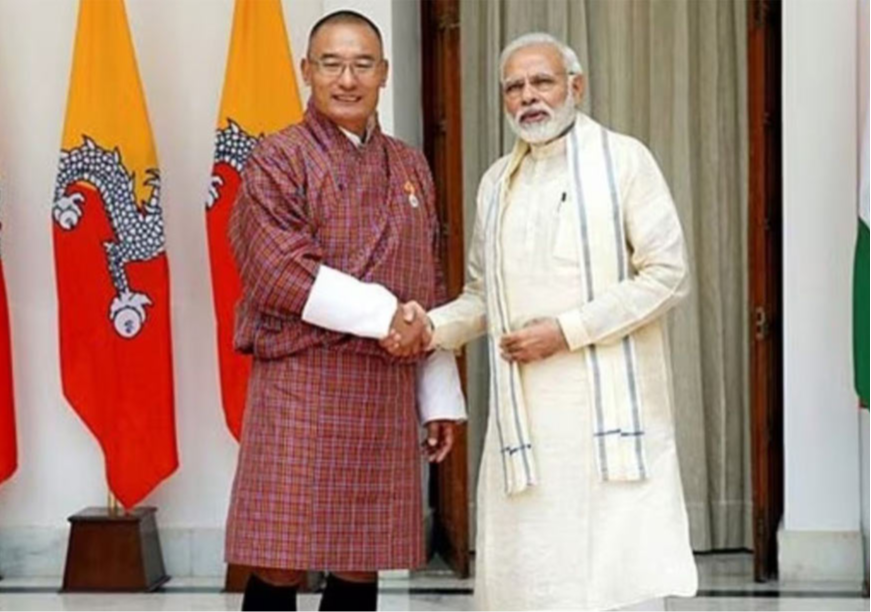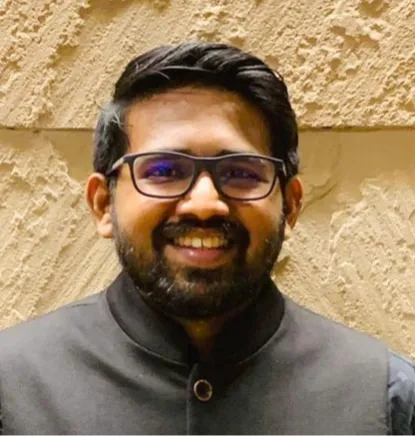Prime Minister Narendra Modi’s state visit to Bhutan last week marks his third visit to the country. The visit closely follows Bhutan’s newly-elected PM Tshering Tobgay’s official visit to India between March 14 and 18. These back-to-back visits demonstrate the special relationship between both countries and the tradition of regular high-level exchanges between them. India-Bhutan relations are the epitome of a win-win relationship between two neighbours who vastly differ in size. PM Modi’s recent visit intends to build on this special relationship, especially as Bhutan confronts its internal and external challenges.
This grim economic outlook, combined with fears of job insecurity due to bureaucratic reforms and a new performance evaluation system, is contributing to a mass exodus. Several Bhutanese students, civil servants, and skilled workers are leaving for Australia and Canada. In 2022 alone, 17,000 Bhutanese—more than 2% of the population—left the country. In 2023, nearly 5,000 civil servants resigned, mostly to migrate elsewhere. For a country with a population of just 700,000, the exodus has put significant pressure on the economy, demography, and everyday administration.
PM Modi’s recent visit intends to build on this special relationship, especially as Bhutan confronts its internal and external challenges.
Externally, Bhutan is also facing an increasingly aggressive and assertive China. China disputes Bhutan in the north and the west sectors. In the north, Pasamlung and Jakarlung are disputed, and in the west, the disputed regions are Dramana and Shakhatoe, Sinchulungpa and the Langmarpo valleys, Yak chu and Charithang valleys, and the Doklam region. Since 1984, both countries have held 25 rounds of negotiations to end the territorial disputes. In the mid-90s, Bhutan rejected China’s proposal to give up on the western disputed territories, especially the Doklam trijunction, fearing that it would have security repercussions for India. Despite the ongoing negotiations, China has continued building roads and settlements and populating some disputed territories.
An attempt to alter the status quo in 2017 led to the Doklam standoff between India and China. In 2020, China laid fresh claims to the east of Bhutan in Sakteng, presumably emanating from its claims over India’s Arunachal Pradesh. With increasing pressure, the previous administration signed a three-step road map, held four expert group meetings, the 25th round of negotiations, and signed a cooperation agreement with China—aiming to demarcate all of its disputed borders except for the Doklam region, which will be resolved trilaterally—between India, China, and Bhutan. They also discussed the possibilities of establishing diplomatic relations.
Amidst these challenges, PM Tshering Tobgay chose India as his maiden foreign destination, demonstrating Thimphu’s trust and hope in India. During the visit, he requested India to assist with Rs 100 billion for the 13th five-year plan (FYP) and an additional Rs 15 billion for the economic stimulus package. These initiatives aim to revive the economy and improve infrastructure. He also welcomed India’s `15-billion concessionary financing for Bhutan’s Gyalsung Service programme—a mandatory service to reduce migration amongst Bhutanese youth by imparting employability skills and instilling nationalism. The PM also met business leaders in Mumbai to attract more Indian investments, trade, and infrastructure, especially for the Gelephu Mindfulness City—a 1,000 sq km special administrative zone—that intends to increase the country’s employment opportunities, promote economic growth, and connectivity with South and Southeast Asia. In addition, both countries also expressed interest in further cooperation on sports, infrastructure, education, agriculture, health, hydropower, non-hydropower renewables, space, tourism, rail and road connectivity, and skilling.
India also signed eight MoUs to ease economic pressure and promote trade, connectivity, space cooperation, and people-to-people relations.
PM Modi’s reciprocal visit to Bhutan just weeks before the general elections further indicates that India understands the urgency and needs of its neighbour. During the visit, India assured assistance of Rs 100 billion— Rs 85 billion for the 13th FYP and Rs 15 billion for the economic package. This assistance is a whopping increase from its 11th and 12th FYP assistance (Rs 45 and Rs 50 billion, respectively). India also signed eight MoUs to ease economic pressure and promote trade, connectivity, space cooperation, and people-to-people relations. These agreements facilitate the trade of petroleum products, food products, and medicines. An MoU was signed to establish two railway lines—Kokrajhar-Gelpehu and Banarhat-Samtse—between India and Bhutan to increase connectivity and trade. India also agreed to strengthen trade and investment linkages and infrastructure, especially in the Gelephu SAR.
On border negotiations, India expressed satisfaction with Bhutan’s cooperation on mutual security and agreed to continue close coordination on issues of national interests. This indicates that India understands Bhutan’s urgency and compulsions to demarcate borders. In fact, in 2020, media reports highlighted that following the Galwan clashes, India encouraged Bhutan to end its disputes so that all three countries could resolve the complex Doklam issue. It seems that despite regular cooperation and information sharing, India deems the border dispute and possible ceding of Bhutanese territories as a bilateral issue between Bhutan and China as long as they do not harm Indian interests, as in Doklam.
On border negotiations, India expressed satisfaction with Bhutan’s cooperation on mutual security and agreed to continue close coordination on issues of national interests.
However, as the India-China competition intensifies, Beijing will try to set the agenda for the region in an attempt to target Indian interests. In addition to delaying a trilateral solution for Doklam, China’s baseless claims over Arunachal Pradesh will further sharpen its rhetoric and claim over Bhutan’s Sakteng. This assertiveness will subject Bhutan and its border negotiation tactics to more strain. Besides, a weak Bhutanese economy will also be prone to more Chinese economic influence and inroads. For instance, Bhutan’s trade with China has skyrocketed from a mere `2 billion in 2020 to `15 billion in 2022 alone. This trade might even increase further as China and Bhutan have expressed interest in establishing diplomatic relations. On its part, New Delhi knows that it will have to tread these Himalayan roads with caution. For now, its message is clear and resolute—it will stand by its all-time friend and neighbour in its hour of need.
This commentary originally appeared in Financial Express.
The views expressed above belong to the author(s). ORF research and analyses now available on Telegram! Click here to access our curated content — blogs, longforms and interviews.




 PREV
PREV



